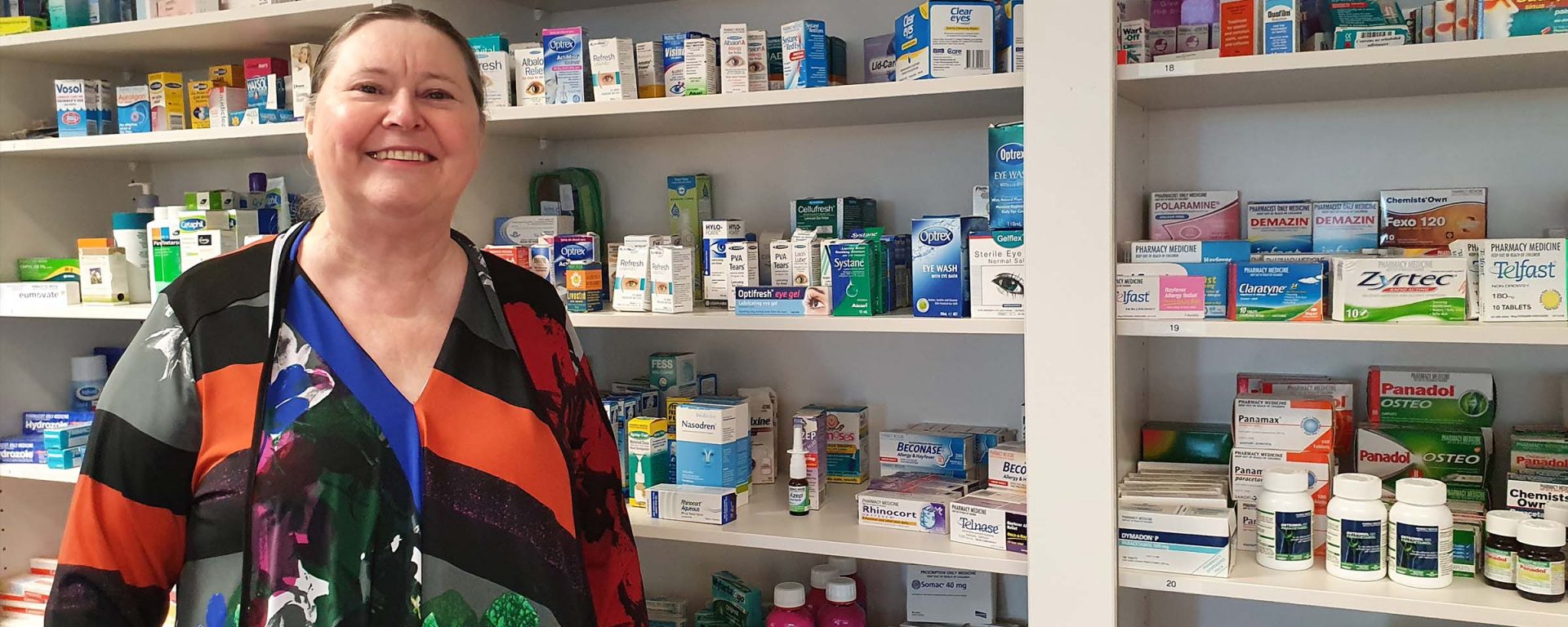The COVID-19 pandemic has highlighted just how important an integrated healthcare system is for all Australians. Nowhere is this more true than in rural and regional areas, where services are often less comprehensive than in the cities. A career as a regional pharmacist is your opportunity to play an essential role in the health of communities – now and into the future.
Professor Maree Donna Simpson has worked and taught in pharmacy throughout her career. She knows how connected a regional pharmacist is with other healthcare practitioners to provide community care.
“Because we work as a multidisciplinary team with inter-professional practice, our communities benefit from access to the full range of health professions’ capabilities. And each one has a role that benefits the others.
“General practitioners, dietitians, exercise physiologists, occupational therapists, podiatrists, physiotherapists, disease state educators and pharmacists all work together to provide healthcare to rural and regional communities. If one piece is missing, it’s a concern.”
Pressure on the system
All healthcare providers have struggled to keep up with the extra demand placed on the system by COVID-19. This includes increased patient admissions to hospitals and administering vaccines.
Pharmacists were no different. And they stepped up during the country’s time of need.
Pharmacists were initially providing influenza vaccines to reduce the risk of an unvaccinated person contracting both seasonal influenza and COVID-19. Later, as the pandemic case numbers increased, pharmacist vaccinators also provided COVID-19 vaccine coverage in their communities.
There were initially 118 community pharmacies vaccinating, which increased to more than 470 by the end of July 2021. From August 2021, 3,900 community pharmacies joined the COVID-19 vaccine rollout. And 1,262 of those were in regional, rural and remote areas.
A regional pharmacist wouldn’t just help with vaccinations. They would stay open throughout the pandemic to meet communities’ need for timely access to medicines and other supplies. Plus, to provide information and assurance.
The need for people like you
The pandemic highlighted just how important a regional pharmacist is to their community, and there is still a need for more of them.
The Pharmaceutical Society of Australia predicts that there could be as few as 52 pharmacists per 100,000 people in regional and remote areas by 2027. That’s compared to an estimated 113 per 100,000 in the major cities. And for Professor Simpson, that’s a real concern.
“The estimated shortage of health professionals has implications for the health of our communities, even when they all work long hours, work collaboratively and use technology and telehealth to assist in basic diagnosis and patient education.
“The implications are that there could be extreme challenges for patients in rural and remote Australia having access to healthcare. Firstly, people may have to wait longer. Secondly, the same number of services might not be available. The repercussion of this is that people in rural and remote areas could experience a greater burden of disease. They will have poorer health outcomes.
“The situation for pharmacy at the moment is critical. Yet at the same time, it presents an opportunity.”
Be an in-demand regional pharmacist
As a regional pharmacist, you will get to play a crucial role in the health of your community. Plus, the government predicts strong job growth for pharmacists in Australia.
So if you’re ready for the challenge, and the opportunity, to be a regional pharmacist, our Bachelor of Pharmacy – learning with Professor Simpson – is the ideal first step.

Bachelor of Pharmacy CRICOS code: 022016K


You must be logged in to post a comment.